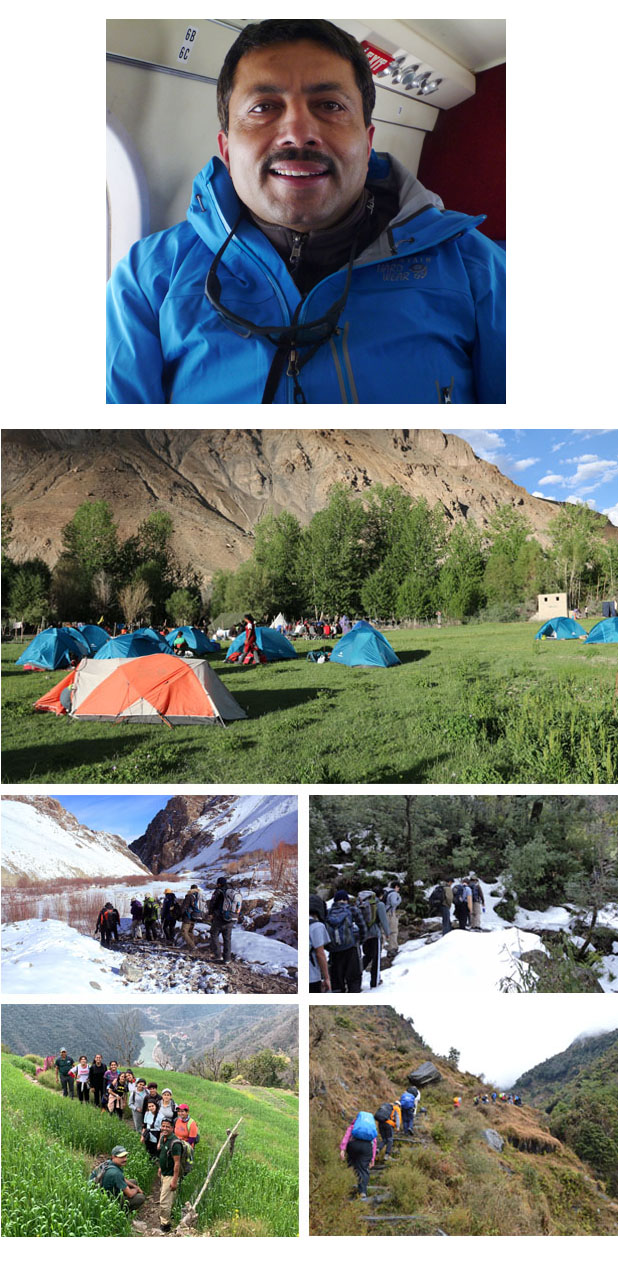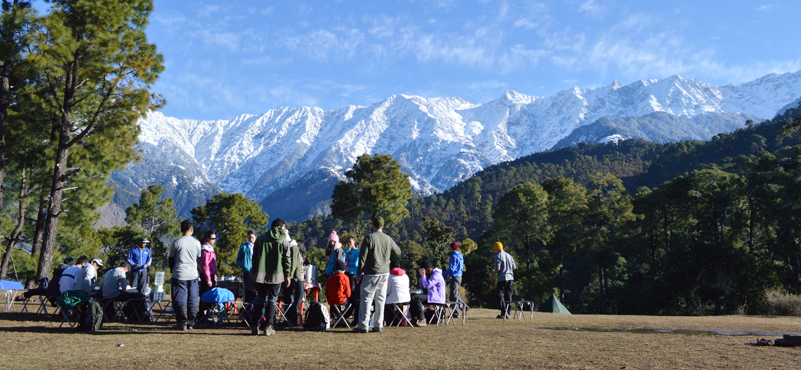Ajeet Bajaj, Padma Shri recipient for his unique successes in adventure tourism, scaling among other achievements, the Everest with his daughter, says in this feature that Trans Himalayan Trails offer a unique opportunity to tap our adventure tourism potential.
 Adventure Travel is a US 683-billion-dollar industry globally showing 21% Compound Annual Growth rate since 2012. According to the World Bank, Adventure travel is the largest niche market with about 238 million travellers annually.
Adventure Travel is a US 683-billion-dollar industry globally showing 21% Compound Annual Growth rate since 2012. According to the World Bank, Adventure travel is the largest niche market with about 238 million travellers annually.
India, on its part, must leverage its immense natural heritage in a sustainable manner to showcase the country as a prime adventure tourism destination. India is a global biodiversity hotspot, we have every conceivable geographical terrain and 73 percent of the Himalayan range in our country. According to a Neilson report for the Ministry of Tourism and industry estimates, Adventure tourism in India was an approx 2000-crore industry in 2016. Given our huge potential vis a vis adventure & sustainable tourism, India can through Adventure Tourism alone, double our inbound figures, presently at 10 million tourists (UNWTO). Moreover, Adventure Tourism will help India become a year-round tourism destination since the shoulder months for regular tourism in India is the peak season for adventure tourism in the country.
With 73 percent of a culturally diverse expanse of the Himalaya in the country, two Trans Himalayan Trails in India could be a game changer for adventure tourism in the country. The Trans Himalayan trails could be walking & cycling trails (paved and unpaved) that are signposted, with lodges, tented camps and home-stays at a distance of 12/ 15 kms:
Western Indian Himalayan Trail from Kashmir across Ladakh, Himachal Pradesh to Uttarakhand ( tri junction area in north eastern Kumaon)
Eastern Indian Himalayan Trail from Darjeeling to Sikkim and Arunachal Pradesh.
Easy access, good communication network and medical & rescue infrastructure could make this an international attraction. Tourism and adventure activities along the Himalayan Trails will be a game changer for these underdeveloped areas of India as it is bound to generate economic activity, employment and help integrate the local population into the mainstream. Tourism to these far flung areas will also act as a catalyst for development of infrastructure, strengthen and reinforce India’s sovereign control of disputed areas of LAC/ LOC and counter the cartographic aggression by hostile neighbouring countries.
A few points to be looked into before opening any new areas:-
It is imperative that Carrying Capacity is determined prior to opening these sensitive areas. Strict regulations and a periodic review mechanism can be put in place to manage over-tourism.
Sustainability: Sustainable Tourism Criteria for India, adapted from Global Sustainable Tourism Criteria and World Wildlife Fund guidelines must be followed in letter and spirit for tourism to these remote areas. A strict ‘leave no trace’ policy including guidelines on waste segregation and waste disposal should be put in place for camps, homestays, hotels, restaurants and planned tourist spots.
Safety: Safety Guidelines of Adventure Tour Operators Association of India must be followed in letter and spirit along the Trails.
ACCESS: Improving road and air connectivity along the Trans-Himalayan Trails.
Road Access: Road infrastructure to the road heads at various points along the Trails.
Air Access: Airports along the Himalayan Trails in the remotest areas of the country with viability gap funding for a limited time period to air operators, will enable them to operate fixed wing aircraft and helicopters to these areas. This will solve the issue of accessibility bottlenecks. Such infrastructure development has been done in many areas of Nepal, Bhutan and Tibet. Tourism to Ladakh has seen tremendous growth due to the existence of Leh Airport. Airports in places like Kargil, Nubra, Spiti, Chilyanisaur (Uttarkashi), Gauchar (near Karanprayag) Pithoragarh, Pasighat and Mechuka in Arunachal Pradesh need to be operationalised. Quick access to these areas will be a game changer for tourism to these remote areas.
Infrastructure: Infrastructure such as hospitals, petrol pumps and other tourism related services will enhance the tourism experience to these forward areas.
Homestays & lodges : Encouraging homestays and small lodges along the trail will be a win-win for the local population and tourists. Soft loans to facilitate the above, training of the local population in the “Atithi Devo Bhava” ethos, service, housekeeping & hygiene and an integrated online reservation system will go a long way in ensuring a quality tourism product.
Hub For Adventure Tourism: The entire Trans Himalayan Trail could be developed as a hub for safe and responsible adventure tourism
Subsequently two additional national trekking and cycling trails can be built to give a major boost to adventure tourism in the country.
- The Ganga Trail: from Gaumukh to Ganga Sagar ( 2525 kms)
- Indian Coastal Trails: Western and Eastern Coastal Trails.
Nepal and Bhutan could also be encouraged to come on board to showcase the Trans Himalayan trail as a great model for regional cooperation between our three countries.This could be a game changing idea for the Himalayan region and our friendly neighbours. The Trans Himalayan Trail could then be a total distance of approx 2400 kms starting from JandK and going through Himachal, Uttarakhand, Nepal, Darjeeling, Sikkim, Bhutan and Arunachal Pradesh.




































